Submersible Pump Guide: How to Choose the Right Water Pump for Your Needs
- Whisper Pumps
- Technical Resources
- Aug 1, 2023

Submersible Pump Guide: How to Choose the Right Water Pump for Your Needs
Submersible pumps are one of the most popular types of pumps on the market. From sourcing water from a well and drainage in floods to sewerage pumping and even emptying ponds, submersible water pumps are suitable for domestic, industrial and agricultural applications. However, due to the wide pump range available, selecting the one you need can seem like a minefield, especially when you consider that we offer over 300 Submersible Pump product lines on our website. So how do you select the right one for your application?
This pump guide explains how submersible water pumps work and answers all the questions you might have, including typical applications and what you need to consider when selecting a Submersible Pump.
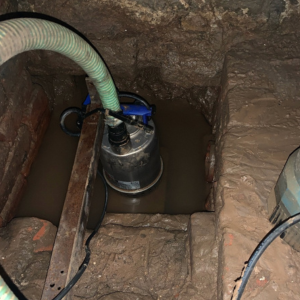
How do submersible pumps work?
As the name suggests, submersible pumps are designed to be fully submerged in liquid to be pumped. Thanks to their hermetically (watertight) sealed motor and close-coupled pump body, submersible water pumps are protected from the water, meaning they are highly reliable and robust solutions.
Electric submersible pumps work by using a float switch that detects when water reaches a certain level and activates the pump's motor. Then the submersible pump pushes water to the surface by first pulling it into the pump, where the rotation of the impeller pushes it through the diffuser, and then from there, it goes to the surface. Submersible water pumps can be supplied with open, channel or vortex impellers depending on your application, meaning they can transfer both clean liquid and handle solids when needed.
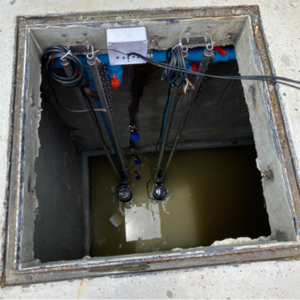
What are the advantages of submersible water pumps?
As discussed above, submersible water pumps are reliable pumping solutions for a range of applications. Due to their unique, completely waterproof design, they offer several advantages compared to some above water pumps. So here are some of the main design benefits that electrical submersible pumps can provide:
- Very efficient – As the pump is already submerged in the fluid, it never has to be primed, and it is also very efficient as less energy is required to move the fluid into the pump
- Quiet operation - Submersible pumps are quiet because the surrounding water muffles any sounds or vibrations
- No cavitation – This pump technology doesn’t suffer from air leaks because there is no “spike” in pressure as the water flows through the pump.
- No overheating – The pump is kept cool by the fluid it’s immersed in, meaning you can continuously run it without damage as long as the pump does not dry run.
- Easy to install – Due to their compact and lightweight design, submersible pumps can be used in fix and portable installations.
Typical Application of submersible pumps
Submersible water pumps have a broad range of pump types such as submersible borehole pumps, submersible sewage pumps and even submersible pond pumps, meaning they can be used for a range of applications. They are an ideal solution for pumping fluids from hard-to-reach places such as wells and sewage and can operate well even in critical conditions. Made with robust iron casting, electric submersible pumps are protected against corrosion and can be used for:
- Irrigation
- Wastewater
- Sewage treatment
- Sump pumping: including emptying tailing ponds from mining operations and drainage in floods.
- Pumping sludge and slurry
- Pumping from wells and boreholes
Important factors to consider when selecting an electric submersible water pump
When looking for the most suitable submersible pump for your application, a few factors need to be considered to ensure that you select the right pumping solution. So here’s what you need to look for when choosing a submersible water pump:
- Flow rate/ pump capacity – this determines how many litres per minute the submersible pump is able to transfer in the most optimal situation, meaning without resistance and without needing to pump the water upwards.
- Delivery Head – This presents how many meters the electric submersible pump can pump up water through a discharge hose/tube. We recommend applying a wide margin when selecting your submersible pump.
- Type of fluid and viscosity – This is an important factor that you need to consider as not all submersible water pumps can handle solids and viscous fluids. Depending on your application and the fluid you want to transfer, the range of pumps suitable for your application will differ. For example, models with channel impellers such as Lowara DOMO submersible pump, are generally more efficient, but they are more prone to blockage, making the perfect solution for pumping cleaner fluids. On the other hand, vortex impeller pumps like Ebara RIGHT submersible pumps are ideal for all sewage applications due to the minimal risk of clogging and solid handling capabilities.
- Pumping distance - Considering how far you want to pump liquid is another crucial factor affecting the submersible pump efficiency. If your application requires long distance pumping, you will need a more powerful pump with the power capability to do the job.
If you’re still not sure what you need, then that’s where we come in! As a leading submersible pump supplier, our technical sales engineers have been specifying submersible water pumps for domestic, industrial and agriculture use for the best part of 25 years. Simply give us a call on 01777 871100 and we will advise you on the pump that best suits your installation.
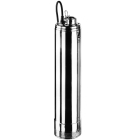
Starting at £550.20 £660.24
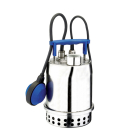
Starting at £175.00 £210.00
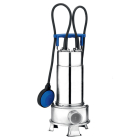
Starting at £430.95 £517.14
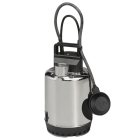
Starting at £158.00 £189.60

